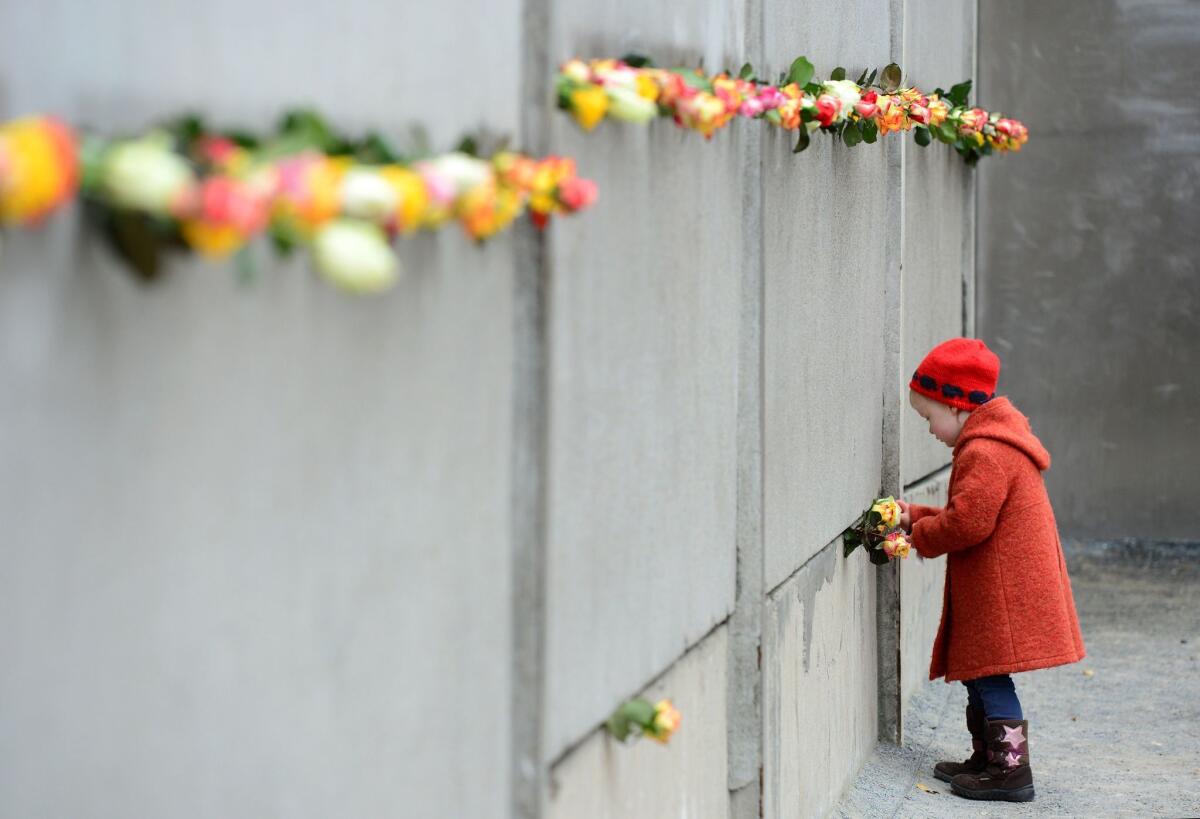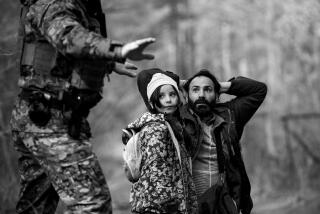At Berlin’s Interfilm, a modern movie confab under history’s shadow

In the early 1980s, a nascent film festival in West Berlin decided, as an act of political protest as much as aesthetic choice, to show movies from East Germany.
Filmmaking of the non-propagandistic kind was banned under the GDR, and such an act was considered transgressive, not to mention nearly impossible. But a few people in the east had been given Super 8 cameras to make home videos of their families, and they’d surreptitiously made experimental films instead. Heinz Hermanns, the young director of the festival -- a shorts showcase called Interfilm -- got wind of this work and set out to screen it.
He put the word out via some back channels and, when a West German contact with a diplomatic day pass crossed the wall, was able to get a few films smuggled out in a suitcase.
Movies at film festivals have over the years taken some interesting routes to fans. Sundance has its stories of prints being run up the mountain in blizzards; Cannes has seen its share of jittery, last-minute transatlantic flights. Smuggling them across the Berlin Wall under the punishing eye of the Stasi, though, might top them all.
“The thing is, the films weren’t very good,” recalled Hermanns with a small laugh on Wednesday. “You’d see a man waiting for a train for 15 minutes and no train would come, or someone staring at a fence. It was all meant to show in a symbolic way about how they wanted to get the … out of that country.”
He laughed, “It meant a lot to the people there. But they could be a little boring for the rest of us.”
The action was, nonetheless, significant for both European culture and Interfilm, a festival that kicked off its 30th edition Tuesday night — in one more irony in a city filled with them, in a neighborhood that once belonged to East Berlin.
Over the next four days, Interfilm will show a mind-warping 630 shorts from 70 countries — an act of globalization that makes its own political comment. Interfilm traffics in shorts, a form that has come back into vogue thanks to the democratizing forces, if you will, of inexpensive equipment and new distribution platforms.
It’s tempting to write off the short given how technically easy it now is to make one. But Hermanns and his curators seek out a certain kind of short.
“You see a lot of films that come, and either they’re not good or they’re well done, but they just end in the middle, because someone made them just so they could get money for a feature,” Hermanns, a straight-talking sort, said in an interview across from one of the fest’s flagship venues. “And we want to avoid that. Shorts are a very difficult art form, and a lot of even very talented feature directors can’t tell a complete story that way.”
Hermanns’ team has instituted a ban on any films longer than 20 minutes, on the belief that anything of that duration is just a feature-in-waiting. As Blaise Pascal might have said, “If I had more time, I would have made a shorter film.”
interfilm sprung up in the early 1980s as part of Berlin’s (earlier) scruffy artistic renaissance. Squats were common then, artists taking over houses that were abandoned or never moved into by their owners. Nearly 200 such buildings filled West Berlin at the time, and they were populated by groups such as Interfilm, which had no money and few ways to fundraise. But there was space in these houses. So they showed films wherever they could get some form of projection. Screenings were often no more than a handful of people, word of them spreading through flyers and friends -- the original social media.
The system basically worked, though one year tensions between squatters and right-wing neighbors grew so high that the event had to be canceled. The festival moved more into the mainstream after the fall of the wall, though even in the 1990s it captured a spirit of anarchy that reigned in post-Communist Berlin.
The festival thrives today thanks in part to the city’s oft-cited creative class. Movies are shown at nearly a dozen screens in large theaters around town; it is Berlin’s second-largest movie confab after the Berlinale. You’ll see ads for it on the subway next to the “Mockingjays” and “Interstellars” of the world.
Meanwhile, the short has itself evolved, containing a border-hopping, genre-crossing quality that is a zeitgeist statement of its own. Among the films on this year’s slate is “Babel,” a hybrid narrative/documentary that uses both actors and nonfiction technique to document the capitalist-driven development in Shanghai and Barcelona. A number of films also use animation — a common practice, even in documentaries — and something one never used to see in shorts.
Still, the fact that the short remains a largely noncommercial enterprise has lent Interfilm, in contrast to the world’s sponsor-heavy and hoopla-filled feature fests, a slightly more underground feel. (To get a sense of the festival’s sharp, subversive aesthetic, check out this promotional video.)
The 25th anniversary of the wall’s collapse was celebrated in Berlin with an apt mix of fanfare and mourning on Sunday, as residents remembered the very divisions Hermanns described. The film world has through the decades sought out its own commemorations. The Berlin Wall has long offered filmmakers a potent iconography, the idea of great distances and unbreakable barriers all summed up in one piece of visual shorthand. It’s why modern European classics from “Wings of Desire” to “Goodbye Lenin” have incorporated the wall in some way. A recent retrospective run by Interfilm offered its own spin, combining shorts from the West Berlin days with those East German Super 8 movies into a single program.
In a full-circle touch, Interfilm is also now held in the Volksbuhne, the Communist-heyday theater that was reclaimed as an arts space in the years after the wall fell. For a festival that began by smuggling movies from the streets around this very place, there is something surreal about its current environs. Producers and financiers talk openly about their upcoming projects in a room called the Red Salon that’s tricked out in the touchstone color. Amid the rebuilt 1950s architecture, directors zip their films in digitally, and patrons walk right in the front door, with neither group finding a need for smuggling for squatting.
That may all dim the romance a bit. But then, these days there are a lot fewer films about people waiting for nonexistent trains.
More to Read
Only good movies
Get the Indie Focus newsletter, Mark Olsen's weekly guide to the world of cinema.
You may occasionally receive promotional content from the Los Angeles Times.











